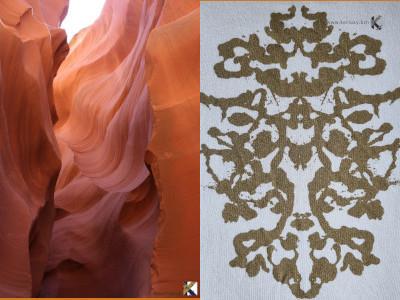Great West & Californian summer: Art, Museums and iconic landscapes.

NEWSLETTER
-Last California summer before the spectrum of containment-
Season’s theme: The Great American West
Spring 2019, I was sketching the upcoming California summer, a road trip from San Francisco to Los Angeles, with a long stop in the nearby Rockies.
As I set the markers, I wanted to taste the caesura:
. acoustic - Savor the silence of the Nevada desert and face the hustle and bustle of Los Angeles,
. visual - Gauging the top of a sequoia tree and admiring the Grand Canyon dive,
. Fahrenheit - Suffocating in the arid climate of Death Valley and shivering in the cool of the night in San Francisco,
. Olfactor - Smell the perfume of the "California Wild Rose" and inhale the fumes of melted asphalt of the big cities.
Art is plural, sometimes predictable in the heart of a museum, sometimes gleaned here and there at the whim of Land Art that Man ends up naming.
Give time to time, observe, dialogue with New World Artists, stroll through two iconic California museums – north in San Francisco at SFMoMa, south in Los Angeles at the Getty Center, contemplate L. Archibald Garner’s sculpture in Griffith Park, and give you news of KERLUXY, this is what you can expect when you read the flashback-summer 2019 newsletter.
The Kerluxy Art Gallery wishes you a great summer 2022.
 Mari Yvenat
Mari Yvenat 
 __
__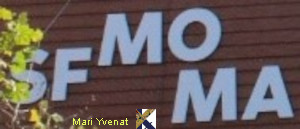 at San Francisco
at San Francisco
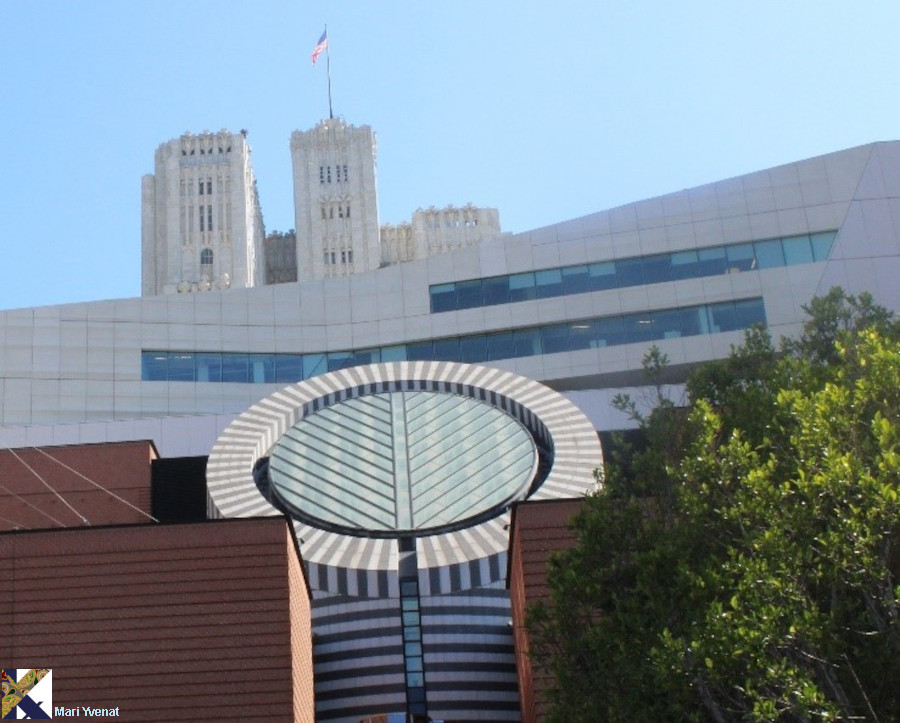
The Atrium outdoor - Photo by Mari Yvenat is courtesy of SFMOMA
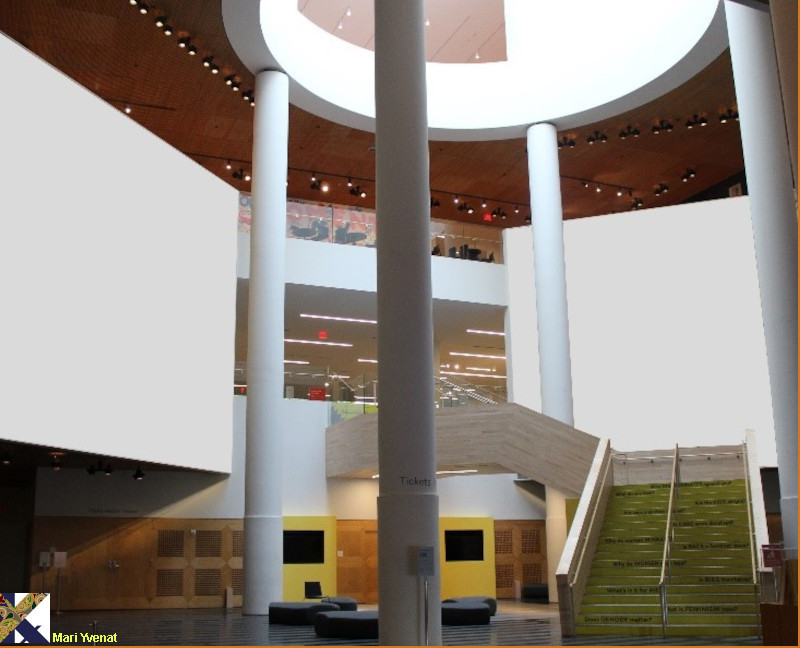
The Atrium indoor - Photo by Mari Yvenat is courtesy of SFMOMA
The San Francisco Museum of Modern Art (SFMoMa) is the largest museum of modern and contemporary art in the United States. With 33,000 works of art, the 42,000 square meter space welcomes visitors on 7 floors of galleries and terraces.
In 1935, it took a certain amount of audacity to invest in an emerging art form that was rather disparaged at the time. The first museum, installed in the Civic Center, housed works by anonymous artists who later became famous. In 1995, the museum moved to a modern building designed by Swiss architect Mario Botta. The brick facade encloses a “central eye made up in the Buren style”, the atrium is a real shaft of light.
The extension of the monument, completed in 2016, was entrusted to the Norwegian architectural firm Snøhetta. In the heart of the city, snaked with small paths, a garden adorned with sculptures, a terrace with a view, the museum is enriched with the Fisher collection. Doris and Don Fisher, founders of the Gap and Banana Republic brands, have entrusted the SFMoMA with their collection of contemporary art, consisting of 1,100 pieces.
SFMoMA presents permanent collections and temporary exhibitions.
The museum houses contemporary art in all its forms:
. painting: « Complexe d’Œdipe » -1930- by Salvador Dali / « Note I » - 2005/2007- by Cy Twombly
. sculpture: « Sequence » -2006- by Richard Serra / « Michael Jackson and Bubbles » -1988- by Jeff Koons
. photography: « Kiki in l’Etoile de Mer » -1928- by Man Ray
. pop art: « Liz#6 » - 1963- by Andy Warhol
. graphic arts: « r is for rabbit » -1968- by Corita Kent
. furniture: « Armchair » - 1984- by Donald Judd
. medias and computing: « Counter line » -1997- by Tatsuo Miyajima
. architecture/design: The building itself is an architectural work of art where design reigns supreme; the new staircase is bathed in light thanks to the concept of four steel columns.
In the summer 2019, SFMoMA paid tribute to Andy Warhol in an exhibition of more than 300 works called « From A to B and Back Again », which was the subtitle of his 1967 book «The Philosophy of Andy Warhol ».

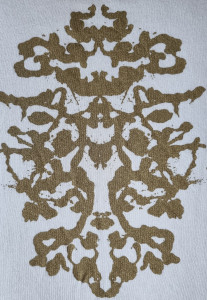
Recognized as one of the greatest artists of the twentieth century, Andy Warhol is a graduate of Fine Arts. He started out as an advertising designer in 1949 and was fascinated by art in general and popular art in particular. In 1961, he produced his first five paintings inspired by comic books, which were exhibited in front of the store where he worked.
Andy Warhol is one of the founders of American POP-ART. In 1960, in the middle of the “Thirty Glorious Years”, the industrial society of directed consumption – the big stores – the commercial surfaces – are born. The mass consumption settles in the everyday life. The artist directs his art on the rail of this rise: with him the art becomes productivist and the paintings produced in series thanks to the process of the serigraphy.
In 1962, emblematic works are released in silkscreen and acrylic on canvas, the artist is inspired by Coca-Cola bottles or Campbell’s soup cans. He began to create colorful portraits of American idols: Elvis Presley, Elizabeth Taylor, Marilyn Monroe… These paintings will be reproduced identically but with very strong nuances, sometimes by accentuating the color of the triptych “hair-lids-lips”, sometimes by accentuating the face as a negative of silver photography.
1964 was a major year for Andy Warhol, who at the age of 36 moved into a factory, his famous large New York loft, which he called “The Factory”. It is at the same time, an artistic workshop where he can make his silk-screen prints, a film set for his filmography and occasionally a nightclub and a meeting place. It is the time when he produces the music group Velvet Underground.
In 1968, his indifference to a playwright’s project earned him an assassination attempt within The Factory.
In 1969, he co-created a trendy newspaper “Interview” about art, fashion and famous people.
In the 1970s, the artist became passionate about photography. Numerous portraits of actors, singers and politicians are shot on commission with the Polaroid Big Shot camera (Liza Minelli, Mick Jagger, Grace Jones, Chancellor Willy Brandt, Yves Saint-Laurent, Paloma Picasso, Farrah Fawcett…) without forgetting his self-portraits.
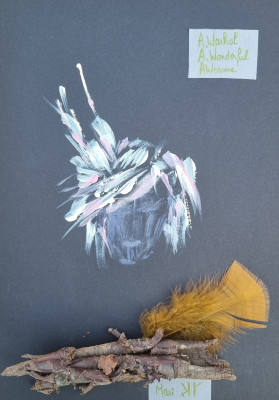
A.Warhol
A.Wonderful
AWesome
After his death in 1987, Andy Warhol became an icon amoung the artists he painted or/and photographed like an Elvis or a Marilyn Monroe. His art is recognizable by all. He is one of the most expensive artists; in 2014, Christie’s sold his two silkscreens “Triple Elvis” and “Four Marlons” for $150 million. His most expensive painting to date remains “Silver Car Crash (Double Disaster)” sold at auction in 2013 for $105 million by Sotheby’s.
 The Getty Center in Los Angeles
The Getty Center in Los Angeles
In Santa Monica, the visit of the Getty Center has a charming taste. A small funicular on a wooded hillside welcomes you to the promontory with views of the ocean and Los Angeles.
Originally a small museum focused on three collections, the current center combines art with architecture and nature, with the goal of welcoming large numbers of visitors to its 2 square miles in Los Angeles, a crossroads of world cultures.
The concentration in one place of a museum, an institute of research on the history of art and humanities, an institute of conservation, an institute of information, an institute of art education, an auditorium with 450 seats, and offices, encourages exchanges and creates a collective emulation.
Architecture
An imposing staircase opens the access to the museum and the campus.
In 1984, the architect Richard Meier was chosen to build the modern architecture of the six buildings that will occupy less than a quarter of the campus. The rest of the space is given over to gardens, courtyards and terraces. The construction took 14 years.
Influenced by the Swiss architect Le Corbusier, Richard Meier drapes the museum, the building bases and the paving with travertine, imported from Rome. He combines off-white metal and glass. The curvilinear lines play with the natural light, contrasting with the sleek stone structure.
The space, external or internal to the Museum, is particularly airy. The reflection of light on the materials magnifies the buildings. Inside, the painting galleries are lit by skylights and movable shutters.
The visitor personalizes his path through the museum, unique each time.
Garden
The natural ravine gives character to the ensemble, offering an aesthetic panorama.
The Getty Center is nestled in a green setting. Eight thousand trees have been planted (cacti, succulents, Italian pines, tropical palms…).
A certain serenity emanates from the environment rich with plazas, fountains, dedicated gardens and plants from around the world.
At the top of the hill, Southern California takes center stage with oak trees, Birds of Paradise and fruit trees created by landscape designer Laurie D. Olin and Richard Meier.
The central garden is the work of artist Robert Irwin. He wanted to sculpt the garden into a work of art in its own right. Seasonality has been integrated into the choice of plants, nature is punctuated by the seasons and its color palette. The height of creativity takes shape in the presence of parasols made of steel bars corseting bougainvilleas with fuchsia-colored flowers.
The architecture blends into the gardens, lined with benches and travertine decorations. A massive dungeon topped with cactaceae overlooks L.A. Here, one no longer knows if the architecture magnifies the gardens or if the gardens magnify the architecture. An air of paradise hangs over the Getty Museum.
Collections
The visit is particular, the lighting singular. The walls of the Museum are sparse with paintings, leaving the visitor to savor the work in its entirety, the eye free of any constraint. The Collections are exhibited in cosy but spacious spaces forming 20 galleries of paintings. During the visit, we were able to admire:
.The painting by Gentile Da Fabriano « the coronation of the Virgin » -1420,
.The painting by Hans Hoffmann « A hare in the Forest » -1585,
.The painting by Peter Paul Rubens « the Entombment » -1612,
.The relief carved in a lime tree by Aubert, Henri, Joseph Parent « Carved relief » -1789,
.The painting by Van Goth « Iris» -1889,
.The bronze sculpture by Alberto Giacometti « Standing woman” -1960.
 THE GETTY VILLA in Los Angeles
THE GETTY VILLA in Los Angeles
J. Paul Getty built a museum on his property overlooking the Pacific coast. He was inspired by the Papyrus villa at Herculaneum near Naples, which was buried under the ashes of the volcanic eruption of Vesuvius in 79.
Opened to the public in 1974, the Getty Villa illustrates its owner’s passion for antiquity.
An exterior peristyle was erected around an elegant pool lined with bronze statutes, replicas of the statutes in the Villa of the Papyrus, and symmetrical flowerbeds.
The inner peristyle marks the entrance to the Temple of Hercules. The floor is a replica of the paving of the Villa of the Papyrus, composed of different marbles of yellow and dark gray color.
The atrium is the main room of the Roman villas, open in the center of the roof to collect rainwater through the compluvium.
The Getty Villa Museum is nestled in a green setting that includes a vegetable garden and the East Garden, where you can admire a replica of the great Pompeii fountain. A paved Roman road winds through the green area.
 The Griffith Park Observatory in Los Angeles
The Griffith Park Observatory in Los Angeles
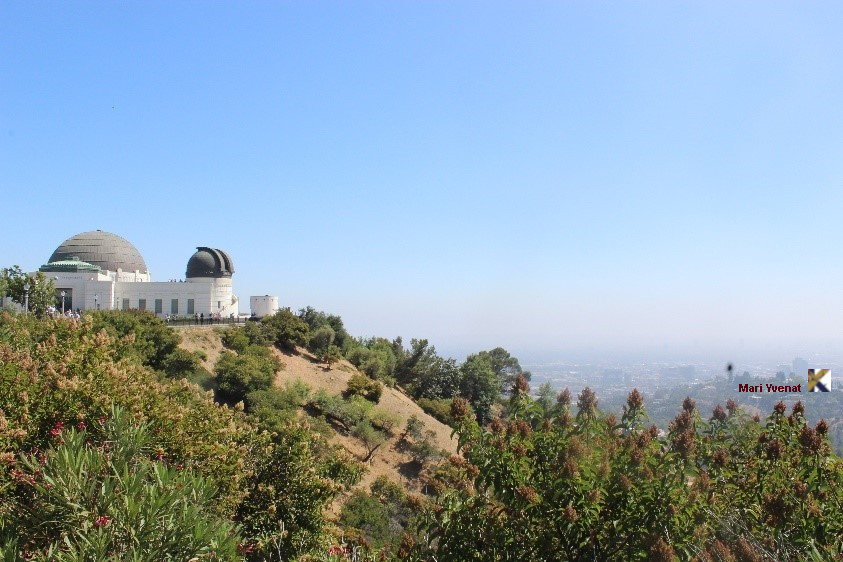

Foucault pendulum oscillating to infinity
Located in altitude, the Observatory of Griffith Park offers a panorama on Los Angeles, the Pacific coast and the Hollywood sign.
At the end of the 19th century, the industrialist Griffith J. Griffith offered to the city of Los Angeles his land located at Mount Hollywood, which became Griffith Park. At his death, he bequeathed funds for the construction of the Griffith Observatory, subject to the free use of the premises by the public.
The Griffith Astronomical Observatory was built in the 1930s and opened to the public in 1935. The building combines Art Deco and Egyptian style. The planetarium is located in the heart of the institution which hosts scientific and space exhibitions. It is also the setting for cult films (“Rebel without a Cause” in 1955, “La La Land” in 2017…).
SCULPTURE « Monument of the Astronomer » by L. Archibald Garner (1934)
The six greatest astronomers of all time
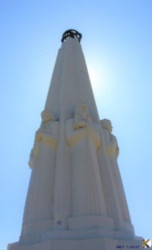 Hipparchus (about 150 B.C.)
Hipparchus (about 150 B.C.) 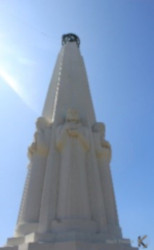 Nicholas.Copernicus (1473-1543)
Nicholas.Copernicus (1473-1543)
 Galileo.Galilei (1564-1642)
Galileo.Galilei (1564-1642)  Johannes.Kepler (1571-1630)
Johannes.Kepler (1571-1630)
 Isaac.Newton (1642-1727)
Isaac.Newton (1642-1727) 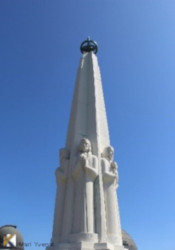 William.Herschel (1738-1822)
William.Herschel (1738-1822)
Illustration above: photos Mari Yvenat are courtesy of Griffith Park
 American LAND ART
American LAND ART
The American Indian territories are spread over 300 reservations in the USA. Financial resources come from casinos built on their lands, tourism and the arts. In the last 50 years, Native American culture and traditions have been revived as Native Americans honor nature.
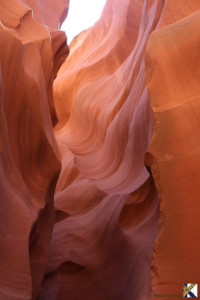
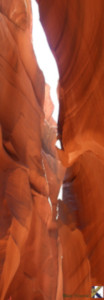
Lower Antelope Canyon, Navajos territory near Page, Arizona
The Navajo Indians call it Hazdistazí or “spiral rock arches”.
Land art doesn’t always require the hand of man to create an impressive spectacle.
Over millions of years, the gorge has been carved and sculpted by water and wind, leaving an orange labyrinth.
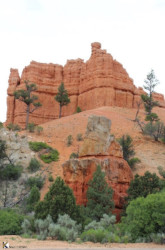
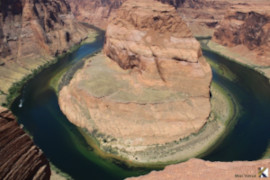
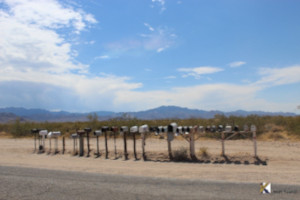
.Brice Canyon, Colorado plateau, Utah
.Horseshoe Bend, Colorado river meander, Page-Arizona
.Stay connected in the desert
 News from the Kerluxy Art Gallery
News from the Kerluxy Art Gallery
-ARTS- July 2022
 The latest artist to join the KERLUXY Art Gallery is Andrea Benetti, the great Italian painter. Benetti's works are present in collections all over the world. In addition to the museums of contemporary art in Italy and abroad and prestigious private collections, including the United Nations, his works are present in the Quirinale (seat of the President of the Italian Republic), in the Italian Parliament, in the Vatican, in various Embassies. For this reason, he was received at the Quirinale, in the Chamber of Deputies and in the Vatican, where he met Pope Benedict XVI and Pope Francis.
The latest artist to join the KERLUXY Art Gallery is Andrea Benetti, the great Italian painter. Benetti's works are present in collections all over the world. In addition to the museums of contemporary art in Italy and abroad and prestigious private collections, including the United Nations, his works are present in the Quirinale (seat of the President of the Italian Republic), in the Italian Parliament, in the Vatican, in various Embassies. For this reason, he was received at the Quirinale, in the Chamber of Deputies and in the Vatican, where he met Pope Benedict XVI and Pope Francis.
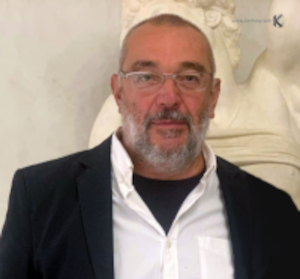
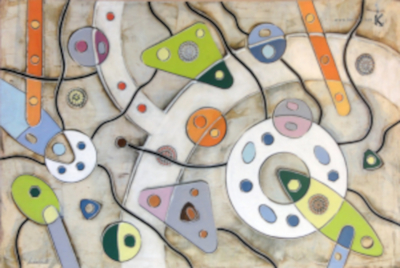
 The association Collective Arts of Brittany is a new partner of the KERLUXY Art Gallery. Created on September 23, 2011, the association Collective Arts of Brittany gathers professional artists, painters and engravers, from the five historical departments of Brittany. Their goal? To diffuse, develop and promote contemporary artistic expressions in Brittany. The association, chaired by René-Claude Migaud, is a place for exchanges and meetings between artists. Regularly, they exhibit in remarkable and historical places.
The association Collective Arts of Brittany is a new partner of the KERLUXY Art Gallery. Created on September 23, 2011, the association Collective Arts of Brittany gathers professional artists, painters and engravers, from the five historical departments of Brittany. Their goal? To diffuse, develop and promote contemporary artistic expressions in Brittany. The association, chaired by René-Claude Migaud, is a place for exchanges and meetings between artists. Regularly, they exhibit in remarkable and historical places.

-CULTURE- KerLuxY’s favorites
The collection of bilingual “Breton/French” poems, sublimely composed and translated by the poet Denez Prigent, and entitled “Kañv (Mourning)”.
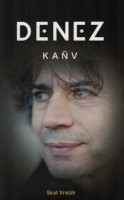
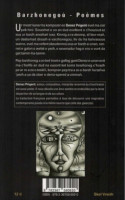
The book by Yann Lukas entitled "Bretagne, Anti-guide (Brittany, anti-guide)".
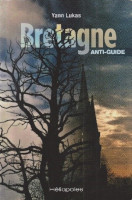
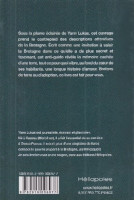
The application « Kwizh Brezhoneg » for smartphone is a MCQ, designed by Morgan Gilet, and a memory aid to assimilate 2.600 Breton words. Progression on 10 levels. Free and without advertising. One becomes quickly addicted.

-SOLIDARITY-
Natural Land Art - Environment, cleaning up the coastline
KerLuxY is part of solidarity. We seek to raise awareness in order to safeguard the natural Land Art, including the Breton coastline.
You are sensitive to the respect of this beautiful planet? Give some time, participate in the collection of waste on beaches and along waterways.
In a friendly atmosphere, with flexibility and facility, two options are offered to you:
. you can join a team, by connecting to initiativesoceanes.org, choose a location near you, the program is displayed with the schedule.
. you can organize a cleanup yourself. To help you, you will find advice on initiativesoceanes.org and on Surfrider Foundation Europe, free “organizer’s guide”.
 Many thanks to the artists of KerLuxY with whom I have a pleasure to collaborate.
Many thanks to the artists of KerLuxY with whom I have a pleasure to collaborate.

